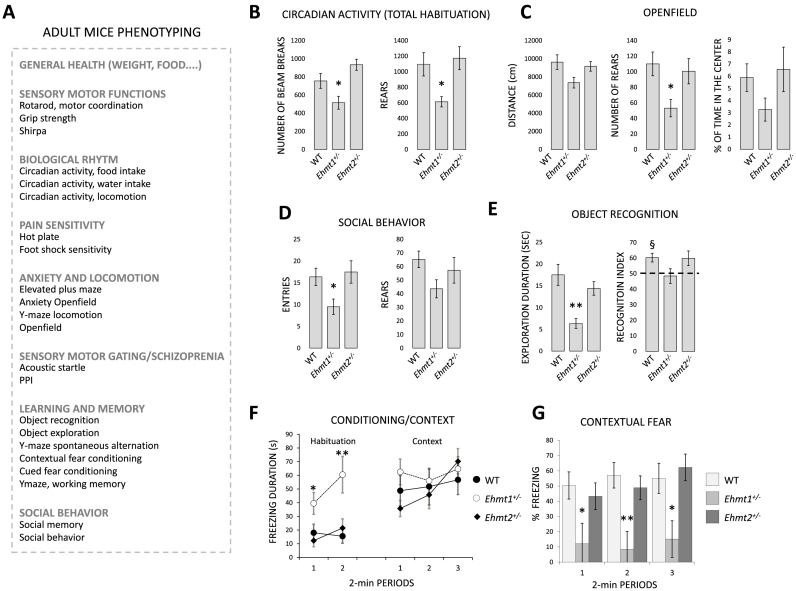Figure 6.
Phenotyping (A) overview. (B) Circadian activity, actimetric cages. Locomotion is measured by the number of consecutive beam breaks (separated by 7.5 cm). There are two beams in the cage (front and back). When the mouse go front, (break the front beam) then back (break the back beam), the system records 1 unit. Ehmt1+/− mice display decreased locomotor activity and rears during the habitation phase. (C) Openfield, Ehtm1+/− display reduced locomotory activity and rears. (D) The number of visits and number of rears in the social recognition test. (E) Duration of object exploration during acquisition, and object recognition performance during retention. (F–G) Duration of immobility during habituation to the conditioning cage and during context in the fear conditioning, and contextual freezing performance (*P< 0.05, **P< 0.01, ANOVA, Student–Newman–Keuls, §P< 0.05, one group t-test, see Materials and Methods).

